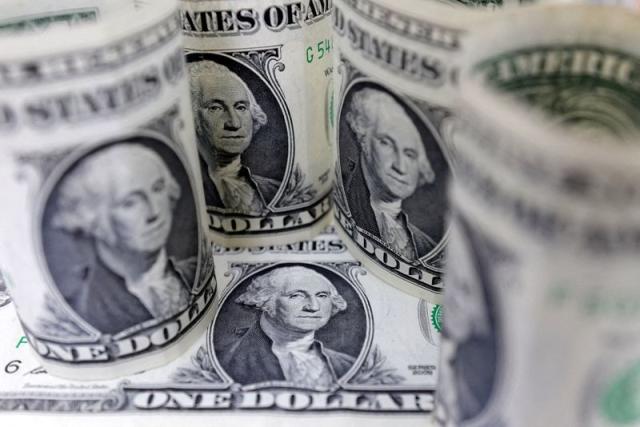The dollar steadied on Wednesday, ahead of key U.S. economic data and a monetary policy meeting in Canada that traders have bet will set off a rate-cutting cycle for some of the world's biggest economies. Investors await U.S. services data on Wednesday and more job figures later in the week.
The greenback has languished at an almost two-month low as signs of a softening U.S. economy on Monday boosted the case for earlier Federal Reserve interest rate cuts.
The Bank of Canada meets a day ahead of a European Central Bank meeting on Thursday. Markets price about a 75% chance of a Canadian rate cut and a 95% chance of a cut in Europe.
The Canadian dollar hugged the middle of a months-long range at C$1.3678 per dollar - as did the euro at$1.0881 - and at both meetings the outlook will be in focus at least as much as the decision. "If there's a green light to a lot more cuts this year, then I think that could really weaken the Canadian dollar," said Commonwealth Bank of Australia strategist Joe Capurso.
The U.S. dollar index rose 0.11% to 104.92. It hit 103.99 on Tuesday, its lowest level since April 9. Investors were also closely watching Brent crude futures, which hovered near four-month lows on Wednesday. "If low oil prices cause disinflation to become a global phenomenon again, we wouldn't expect more policy divergence, nor a weaker dollar, as this would trigger 'dovishness' everywhere," said Thierry Wizman, global forex strategist at Macquarie.
The yen slipped about 0.6% to 155.90 per dollar, retracing much of Tuesday's gains that were driven by investors unwinding bets in emerging markets.
Japanese real wages fell for a 25th straight month in April, data on Wednesday showed, as inflation outpaces nominal pay rises. The yen is the worst-performing G10 currency this year, by some margin, and on Tuesday BOJ Deputy Governor Ryozo Himino said the central bank must be "very vigilant" to the impact the currency's weakness could have on the economy and inflation.
The Australian dollar he Australian and New Zealand dollars edged up after domestic economic news proved less dire than investors had feared.
The Aussie was last up 0.1% to $0.6657. The New Zealand dollar rose 0.1% to $0.6184. Emerging markets stabilised after a turbulent few days. The Mexican peso steadied after dropping some 4% on the dollar and nearly 6% on the yen since the ruling left-wing Morena party was re-elected and, in coalition, within reach of two-thirds majorities in both Congress chambers.
"The trigger ... has been the pricing that the Morena party’s majority in Congress (means a) mandate to push forward with major structural reforms and see greater government control over businesses and the economy – a factor that potentially reduces Mexico’s standing as an international hub," said Pepperstone's head of research Chris Weston. Heavy selling of the peso against the yen showed investors pulling back on one of the most popular "carry" or interest-earning trades. "President-elect Sheinbaum has signaled responsible fiscal policies and central bank autonomy," Macquarie's Wizman said, adding that the selloff on Mexican assets looked overdone. The dust may settle soon, leading to a period of outperformance for the Mexican peso," he added. India's rupee dropped after recovering from a seven-week low it hit as election results showed voters had returned Narendra Modi on a much slimmer margin than had been expected.










